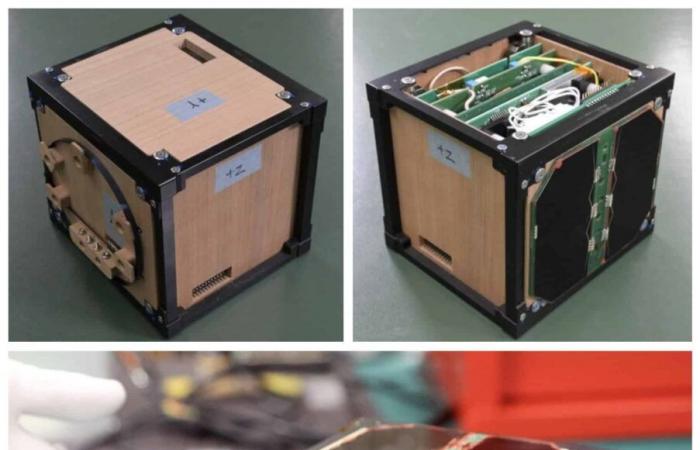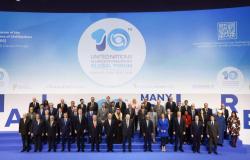Will wood soon become an integral part of space exploration? A world first has just opened this astonishing path. A wooden satellite, developed by researchers at Kyoto University and Sumitomo Forestry, left Earth aboard a rocket SpaceX, marking a potential turning point in satellite design.
Kyoto University
The device, nicknamed LignoSat, is distinguished by its unique material: wood, chosen for its potential to disintegrate entirely upon atmospheric re-entry. This innovation aims to respond to an environmental problem: pollution by metal particles from satellites at the end of their life, which can disrupt theatmosphere and the telecommunications. Each side of LignoSat, a compact box measuring 10 centimeters on a side, was carefully designed to withstand the rigors of space while allowing for complete destruction upon return to Earth. Launched from NASA’s Kennedy Space Center in Florida, the satellite is part of a mission to supply the International Space Station (ISS), where it will be tested in extreme conditions.
Its designers explain that this material could offer an alternative to the metals currently used in the manufacture of satellites, components often responsible for pollutants when they burn at the end of their life. By burning, the wood would eliminate this risk, an aspect considered crucial by Takao Doi, astronaut and professor at Kyoto University.
This ambitious project aims to collect real-time data on the resistance of wood in space. When it is released into space from the ISS, scientists will monitor its behavior in the face of extreme changes in temperature and radiation. This information will be essential for assessing whether wooden satellites can actually become viable in the coming years.
If the tests prove conclusive, this innovation could open a new era for small satellites and short-lived missions. This would not only reduce production costs but also limit the ecological footprint of next generation satellites, an asset which is already arousing the interest of thespace industry.
The success of this launch marks a key milestone for Sumitomo Forestry, which has announced the possibility of developing serial wooden satellites in the future. Kyoto University and Sumitomo Forestry are even imagining applications beyond satellites, with wooden components for other space infrastructures.
LignoSat will be ejected into space from the ISS in about a month to evaluate its durability in detail. This unique experience could soon transform wood into a valuable ally in space exploration.






